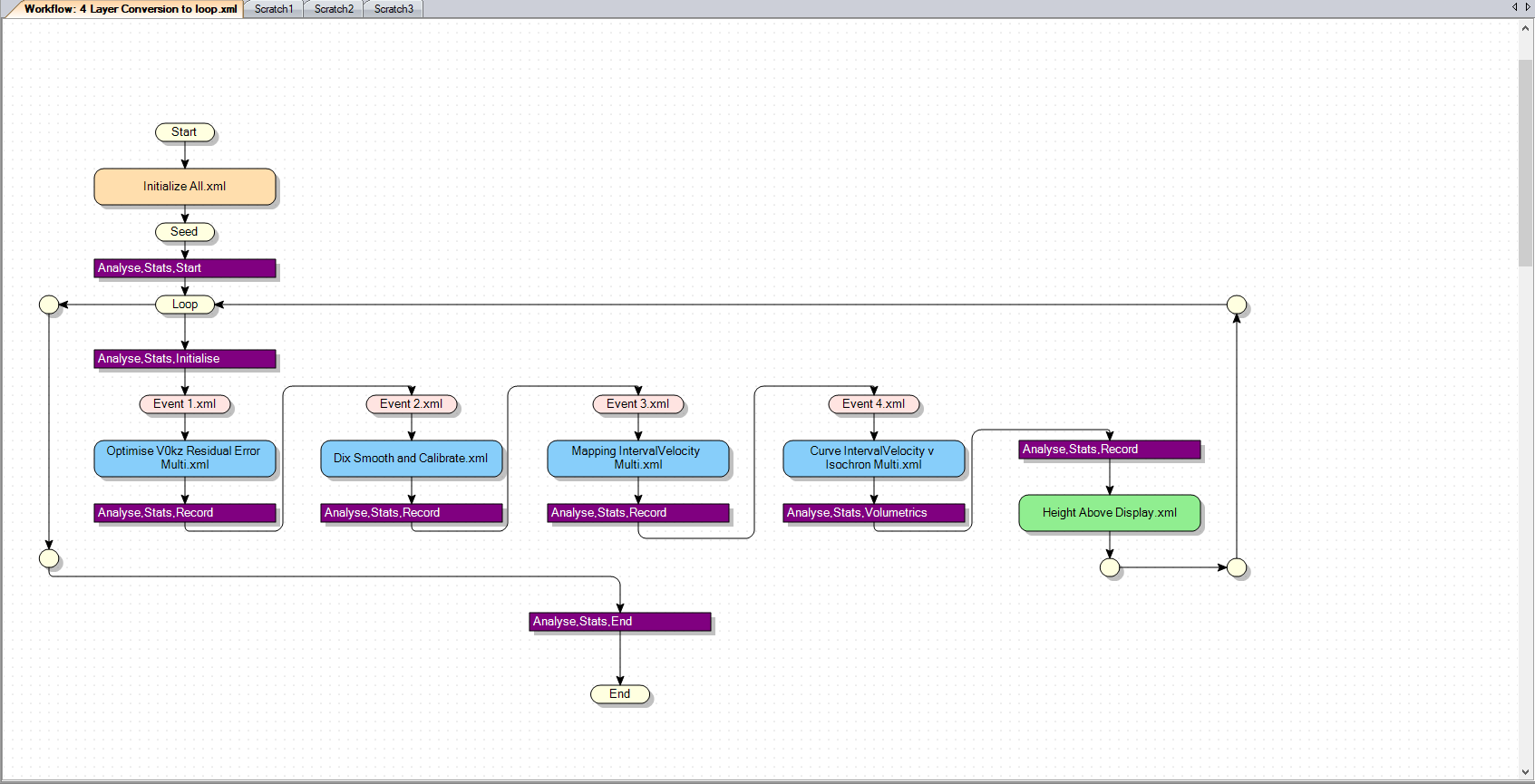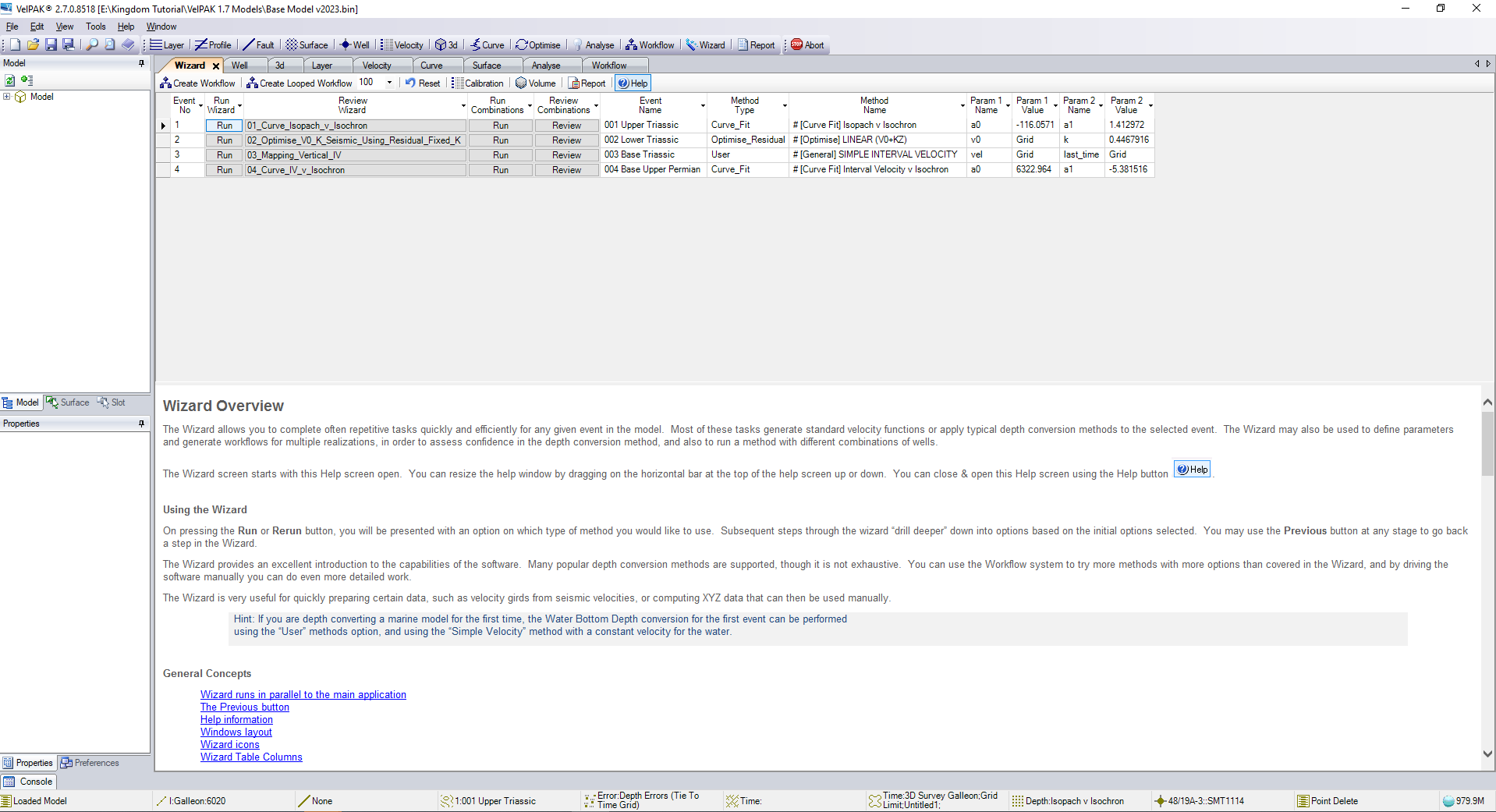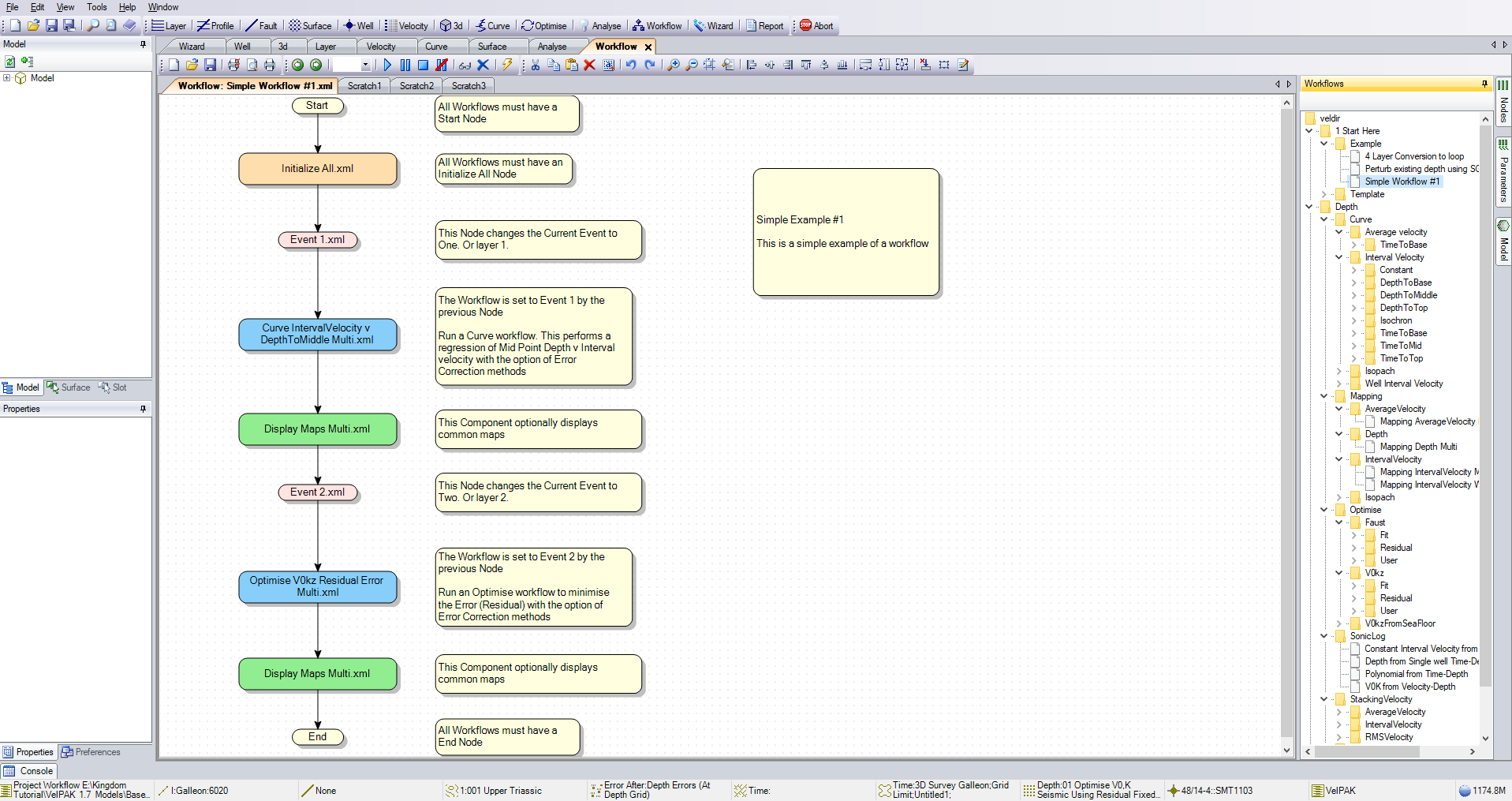Velit and VelPAK have a long history of continuous development. Through its early life, the software was used in a manual way, with it providing many options for the user to tackle the most challenging depth conversion scenarios. Then, the software was enhanced, enabling the user to automate a series of operations through the workflow system. This powerful addition also provided users with the ability to have fully transparency of how the software was coming to its answers, as well as the capability to generate a full audit trail of technical steps for your velocity models.
Today, you can use Velit’s Wizard module, which has been designed to be easy to use for every level of user experience (providing you understand the language of geophysics). The Wizard features a series of guided pages which will step you through even the most complex processes, with just a few button clicks. For a given layer, you can select Run and then choose from a series of different depth conversion methods. The software will then check that the data has been loaded appropriately and is suitable to use for the selected method, e.g. to plot a regression on a graph, you would need to have loaded a minimum of 2 wells into the model for the software to be able to compute the regression function. You can then select a specific function and dock the relevant module windows to the side of the wizard to perform the analysis of the depth conversion for the layer.
Recently, the Wizard has been enhanced with the capability to automatically generate a Workflow of all the steps you have taken through the Wizard. This can be especially powerful when it comes to the assessment of uncertainty around your Best Technical Case depth conversion model, as the software permits you to automatically create 1000 depth models at the click of a button, providing you have selected the parameter range of variation in the Wizard beforehand. You can also use any number of different functions within the workflow module, if for example you wanted to evaluate the impact of using a non-standard function like Faust.
Stochastic modelling within the software is completed by utilising a loop, such that you can have the volumetrics, stats and maps all recorded for each model that is automatically generated. Batch processing in the Workflow system also permits you to leverage multiple cores on your computer to process the data more quickly and a dataset of 20km x 30km for 5 layers might take around 4 – 5 hours to generate 1000 depth models.
If you would like to know more about Velit’s Workflow module, VelPAK or Kingdom Seismic Inversion then click here. Alternatively, you can contact us for a free evaluation by e-mailing us on sales@equipoisesoftware.com.
The software is provided by S&P Global (who we partner with for Kingdom) with perpetual and subscription pricing available on request. We offer a series of Teams meetings throughout the evaluation to help you quickly step up the learning curve and enable you to see the results for yourself.




